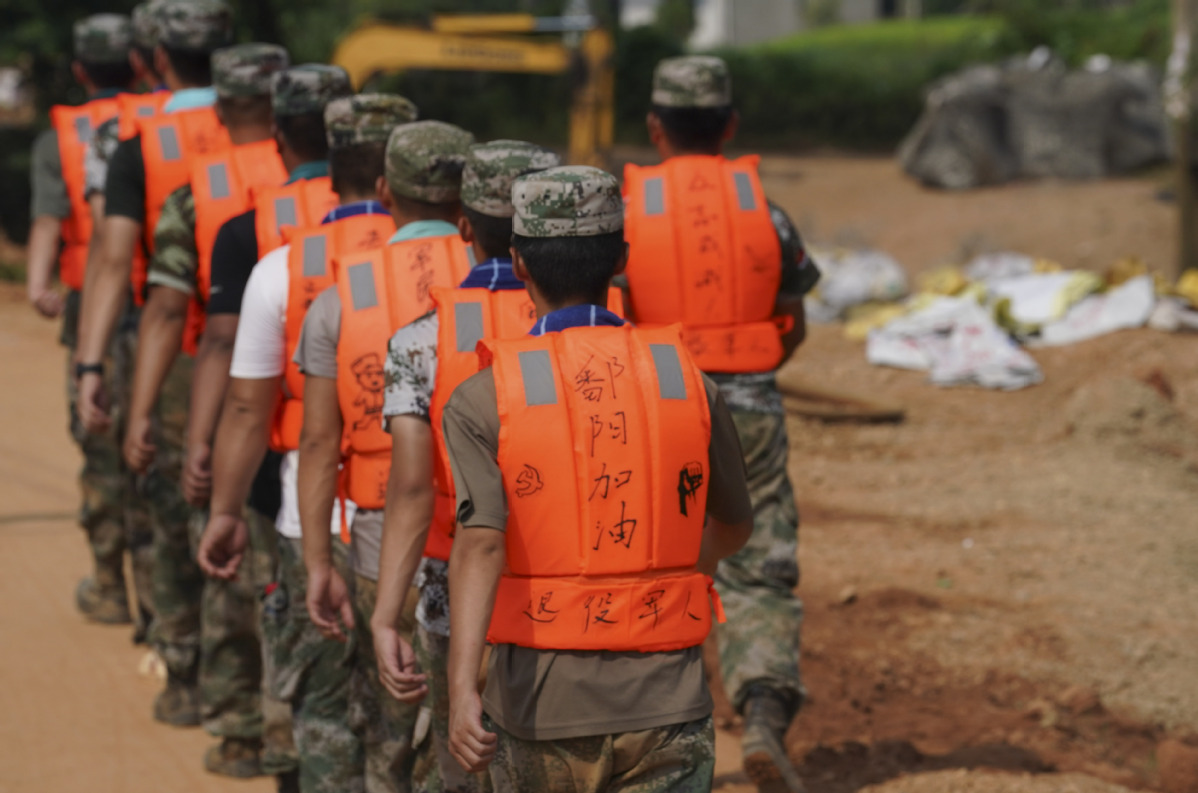
Veterans from Xiaoyi city, Shanxi province, volunteer to help Poyang county, East China's Jiangxi province, one of the hardest flood-hit areas, on July 18. They drove all the way to assist in flood relief. (Photo by Feng Yongbin/chinadaily.com.cn)
The Ministry of Emergency Management provided a stark summary of the flood situation in the Yangtze River valley on Sunday.
Some 23.86 million residents have been affected by heavy floods in 24 provincial-level regions across the Chinese mainland since the start of July, which have left 31 people dead or missing, and more than 2 million displaced. The population evacuated rose 53.6 percent compared with the average over the same period in the past five years.
Yet despite the floods being the worst since 1998, the number of people dead or missing was 82 percent lower than the average for the same period over the past five years, while direct economic losses dropped 5.9 percent on the five-year average.
This shows the country's better preparedness and improved capacity for disaster control.
But this is not the time for the authorities to give themselves pats on the back. There can be no complacency. The worse may be yet to come. The entire Yangtze River valley is only beginning to see the peak of its annual flood season, which usually spans the second half of July and first half of August.
According to emergency management authorities, water levels in some sections of the Yangtze and Huaihe rivers, as well as such major lakes as Dongting, Poyang and Taihu have repeatedly surpassed warning marks. And storm clouds continue to linger over the flood belt.
That one after another different sizes of reservoirs have opened their sluice gates to discharge floodwater, inundating homes and large swaths of farmland, shows the expectations of further heavy rain.
Not to mention this is only the picture along the Yangtze. The rest of our disaster-prone country is not unfamiliar to similar havoc in the summer season. Many major rivers, from the Yellow River to the Songhua, Nenjiang and Liaohe rivers in the northeast have devastating floods on record.
If the high pressure moves northward, causing high precipitation, significant flooding may occur not only along the upper and middle reaches of the Yangtze, but also the Yellow River, as well as the Huaihe and Songhua rivers.
On Sunday, the flood alert level for the Huaihe River was raised to the second highest level on the country's four-tier scale, after days of torrential rain.
Considering the greatly improved technological and financial capabilities the country has developed, it is vigilance and preparedness that have made the difference so far. These must be maintained. It is important that all departments involved in the fight against the floods enhance their coordination and cooperation to consolidate efforts to protect lives and property and ensure a speedy post-flood recovery.


